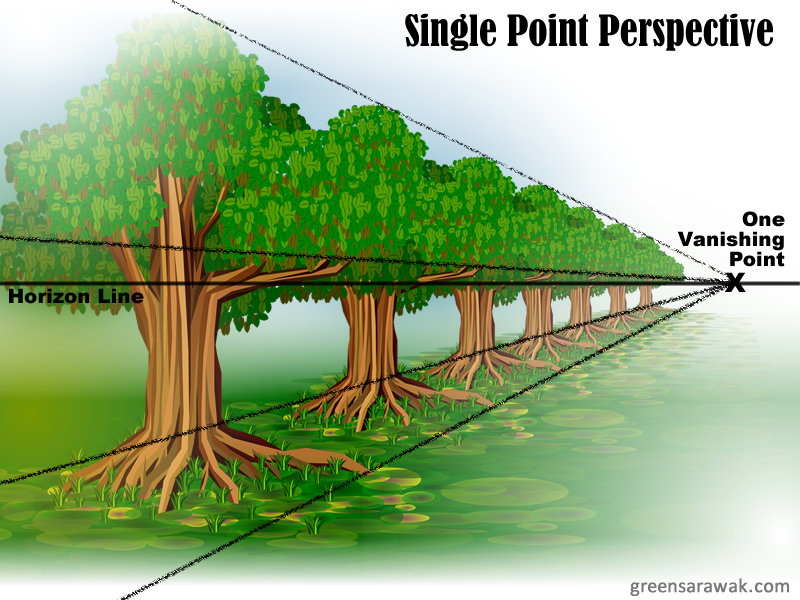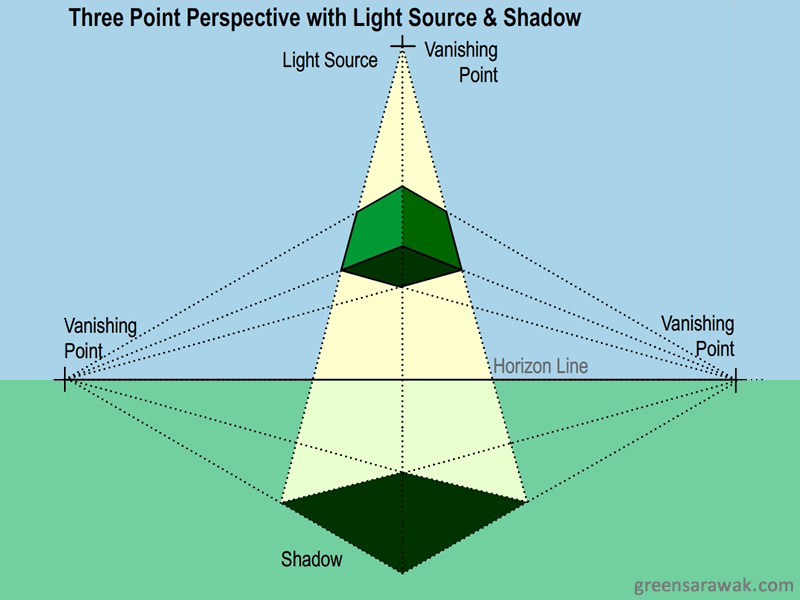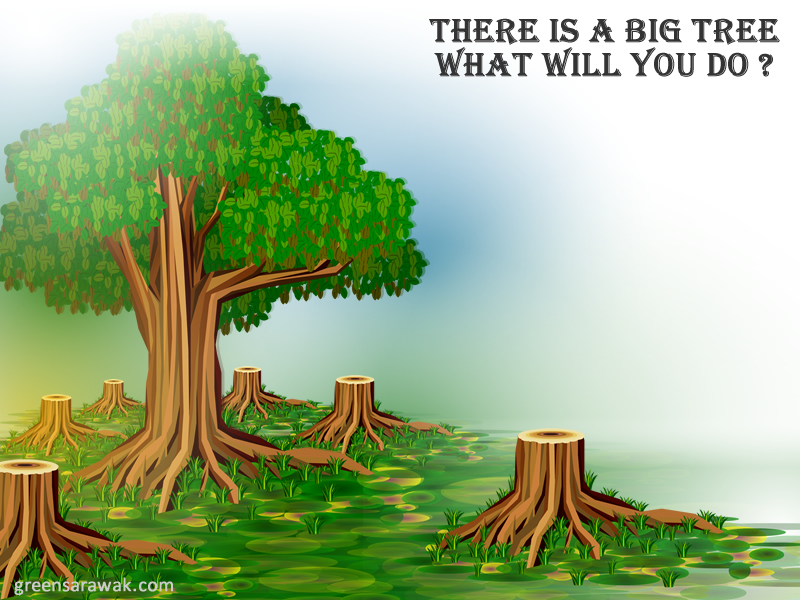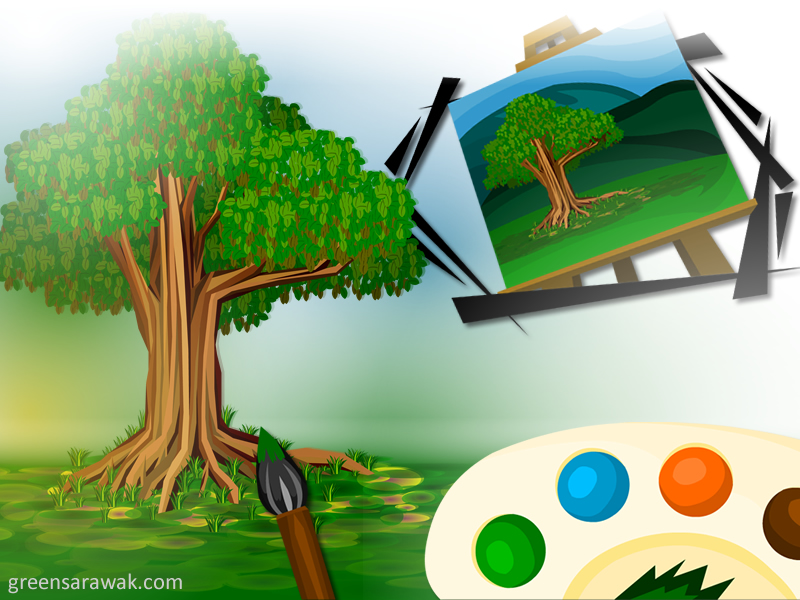“perspective” by definitions means “a point of view“. There is always a subject (reference) that is perceiving and objects that is being perceived. It generates an understanding of the object depends on way it may perceived.
Widely used in geometry and photography, which a certain way of presentation can give an illusion of height and depth. In art, perspective gives a 3 dimensional ideas on a 2 dimensional drawing.
With existence of relativity in perceiving an object, no two person will generates exactly identical impression and conclusion on same object, although it can be similar to each other.
Perspective in Geometry
Perspective is the art and mathematics of realistically depicting three-dimensional objects in a two-dimensional plane.
The concept was initially coined by Filippo Brunelleschi (1377-1446) discovered theory of perspective. Essentially in parallel lines on a horizontal plane depicted in the vertical plane meet at the vanishing point. Only objects in perspective looks realistic.
The study of the projection of objects in a plane is also called projective geometry. There will be no special cases due to parallel lines since all lines meet. The concept is easily extended to higher dimensions.
Perspective exist because there exist a relativity to its surrounding environment. It interacts with single horizon plane or plane of perspectivity.
In art, use perspective to show the relative depth of an objects to a point of reference. Usually the objects further away will appears smaller until it was finally infinitely small that is disappear from sight.

Single point perspective is the simplest form of perspective, there there is a horizon plane with which one vanishing point exist. It is usually used to represent a linear relationship.

Perspective with two points and above usually used to show relationship in a three dimension world.

To add more perspective objects within the field of perspectivity is easy with adding more reference lines which intersect with the vanishing point.

Two point perspective also can used to show three dimension relationship which do not lies on a horizon plane.

This shows the cube in different planes which creates a illusion of depth and different views on the cube. We can create a street view which implies an object is on the same plane as the eye level and the horizon plane. We can also create worms eye view which an object which is view from below, or simply the object is above the eye level. Similarly to birds eye view where object is below eye level.

Three-point perspective is usually used for buildings seen from above (or below). It is usually happens when seeing a huge object close up, causing the further part of the object become smaller. The extra vanishing point is far up in space when looking up a building from below, or far below underground when a building is look down from top.

A four point perspective is like looking the world with a wide lens (convex lens) where the center of the image is amplified compared to the edge. It depict both a worm’s-eye and bird’s-eye view of a object at the same time.

Like four point perspective, the five point perspective will represent the world in a hemisphere manner, like viewing through a 180 degree fish eye lens. Such perspective is mostly used in fish eye photography.
Although there is more perspective is possible, however by adding more perspective to a geometry will only brought to an artistic value rather than a practical value.
Perspective in Opinions
When we try to give opinions, deciding a conclusion, having an impression, it is always guided by our own perspective on an issue. Hence it always ends up a relativity in opinions, impression and conclusion.
This type of perspective is also known as cognitive perspective. In which why a perspective is chosen is closely related to a value system or with an associated belief system. Such system require an formed understanding and previous perceived experience which guided by a coherent belief. It is strongly influence by group of people in the society who had similar belief, understanding and experience.
For example, people from same school of though will have similar opinion (but not need to be exactly identical, as perspective can be individualized) on resolving an issue.

The classical example of perspective in opinions is “what will you do or think of if you had a big tree in front of you”

An artist or a painter will look at a tree and think of it as a beautiful art of nature. He will try to portray this precious gift in a form of painting or artwork. In his believe system, everything great must be in form of an art, which guided his opinions and perception of this tree.

A logger or a wood cutter will in the other hand think of it as a valuable piece of log, a raw material which can obtained by cutting it down and sell for a fair price or use for many wood works and constructions. In his believe & value system, identification of type of wood, quality of the wood, age of the wood, value of the wood, shape and size of the wood etc will play role before selected to be cut down for further processing.

A blind however will regard any unmovable object as a obstacle on his path forward or as a marker for the next point of direction. In his believe system, it is important to able to move around without himself or other people being injured in the process, at the same time not to be over dependent.
Everyone have different perspectives, so whats yours ?
~ An Article by Gilbert Lawrence ~






